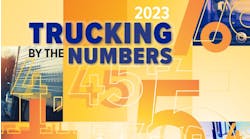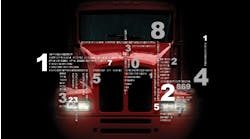It's no secret that trucking and transportation are changing—and quickly. While in some ways trucking businesses can be very traditional, relying on "old school" methods and face-to-face relationships, technology is taking hold more than ever and in many facets of the industry. And it's opening the doors for sophisticated fleets to do things they never could before.
In fr8star.com and Comdata's 2018 Heavy Haul Freight Carrier Survey, freight carriers identified the top four factors that would make the biggest impact on their business. In this final installment of our Trucking by the Numbers 2018 series we included those factors, and fleet management systems and technology could deliver all four.
Those older, traditional business methodologies in trucking apparently could use some updating in some cases. For example, for more than half a century, oversize/overweight loads have been largely booked through traditional brokers by phone, fax, or email. Three out of four carriers in fr8star.com and Comdata's survey said their experience with traditional brokers has been good, but very tellingly, nearly that same amount said if they never had to deal with a traditional broker again, it'd be a good thing.
Launch slideshow: The future of freight
They say so due to things like poor communication with brokers, which half of carriers in the survey reported. Even more said they got poor information about a load, and a sizeable chunk—40%—said they got paid late.
More carriers and drivers are turning to online freight marketplaces, but many still have not. Take a look at some figures in that regard, including that of those who haven't tried an online freight marketplace, 41% have stayed away because they don't know how such a marketplace works.
And meanwhile, among those who have used an online freight marketplace, 61% said they made more money doing so.
The need for freight transport is growing, including due to continued increases in e-commerce. The American Trucking Assns. projects that for-hire carrier tonnage in the United States will rise to more than 6.3 billion tons by 2023, with annual growth of 3.3% through that year and then 2.9% growth from 2024-2028.
View this slideshow for more info on all these points as well as a look at the size and scale of the U.S. third-party logistics industry (which, incidentally, is 1.5 times as big as the beer industry) and the North American intermodal freight industry, including growth in intermodal by segment.


